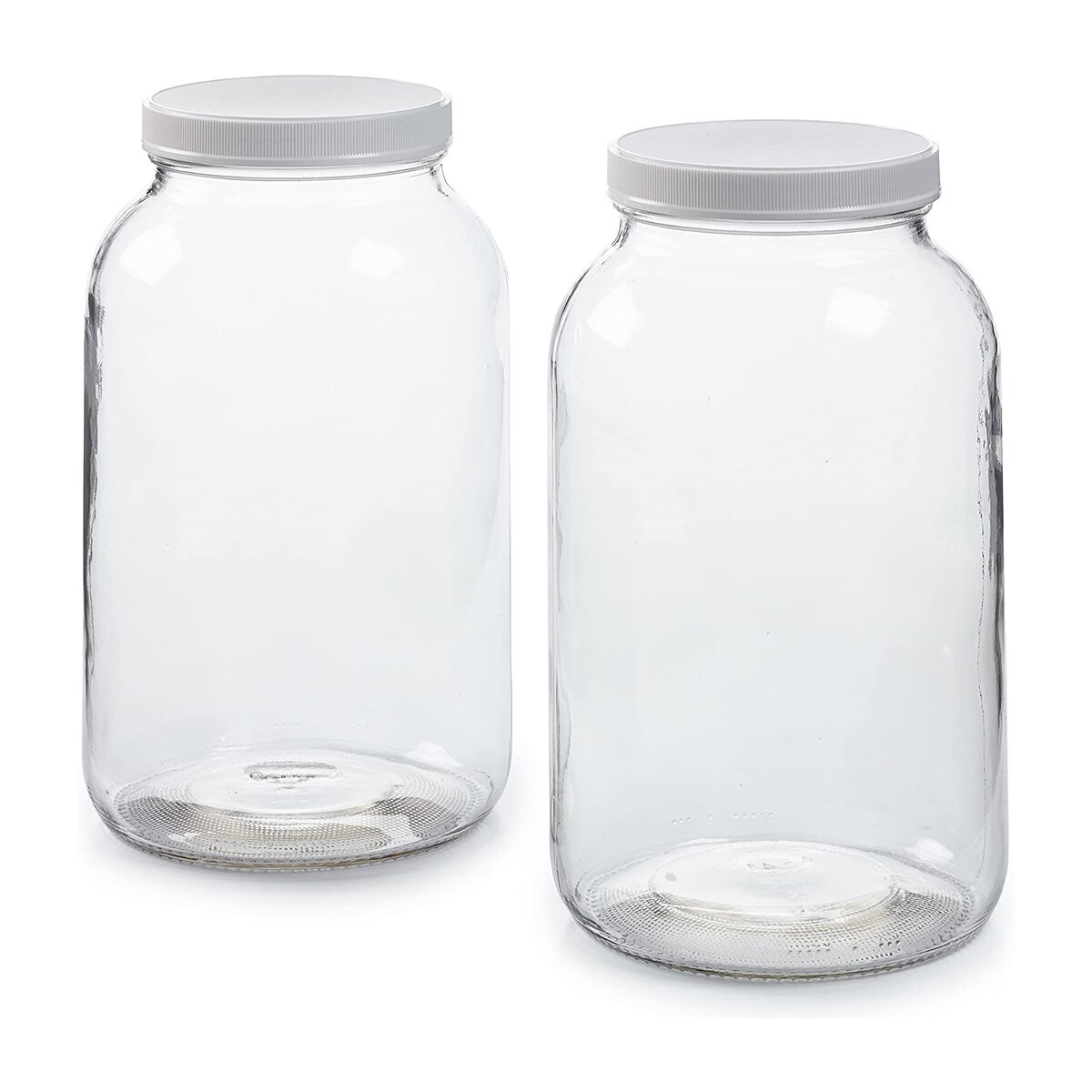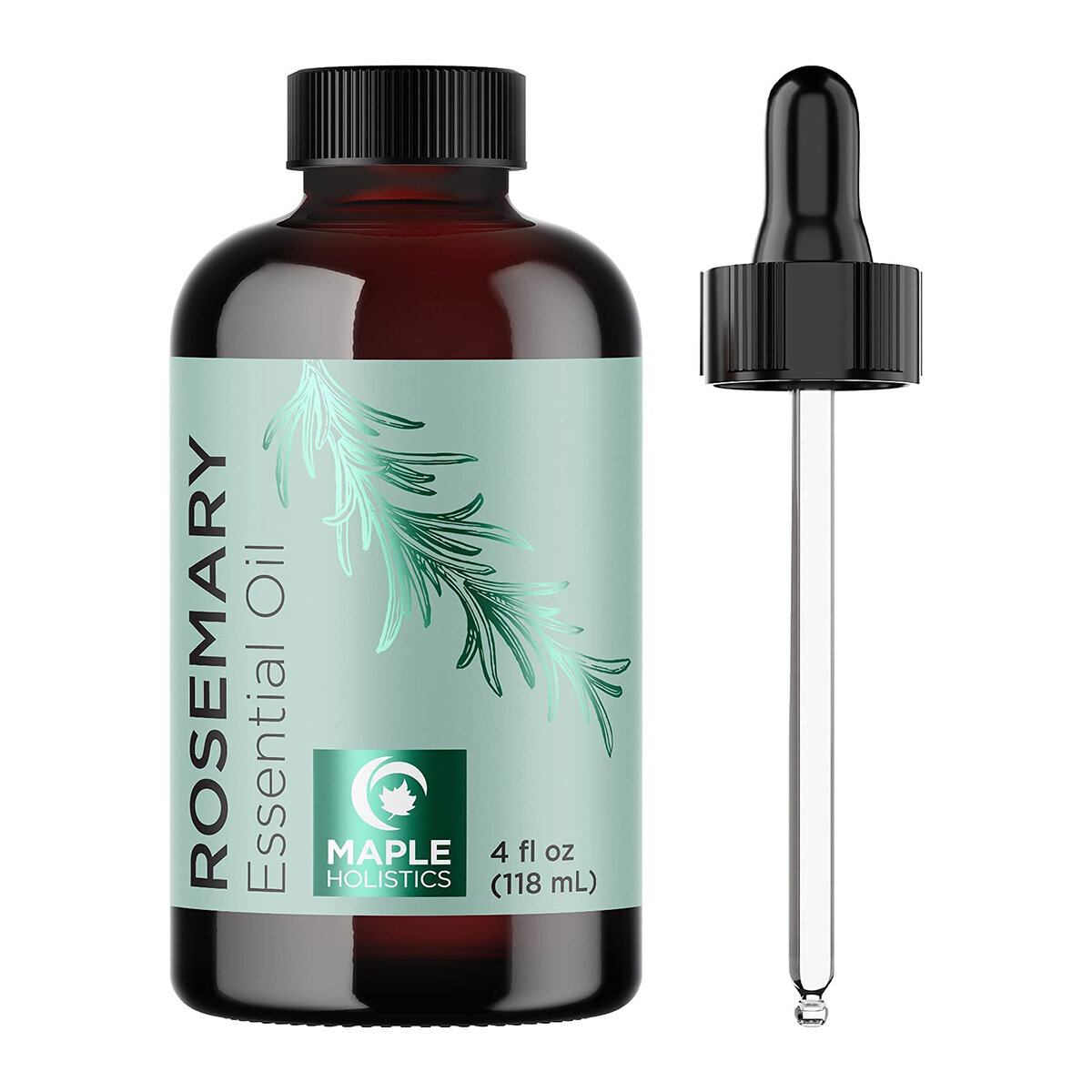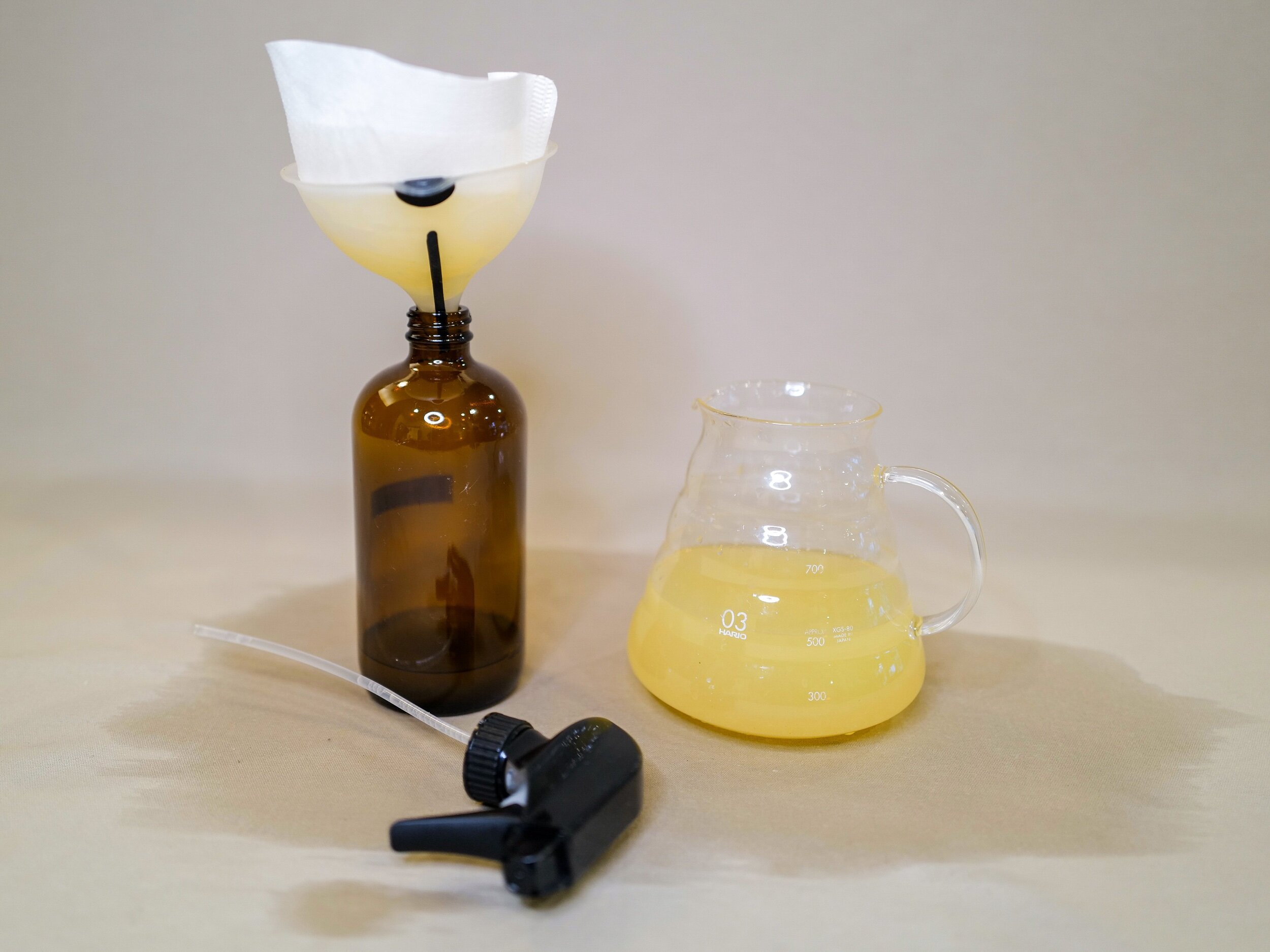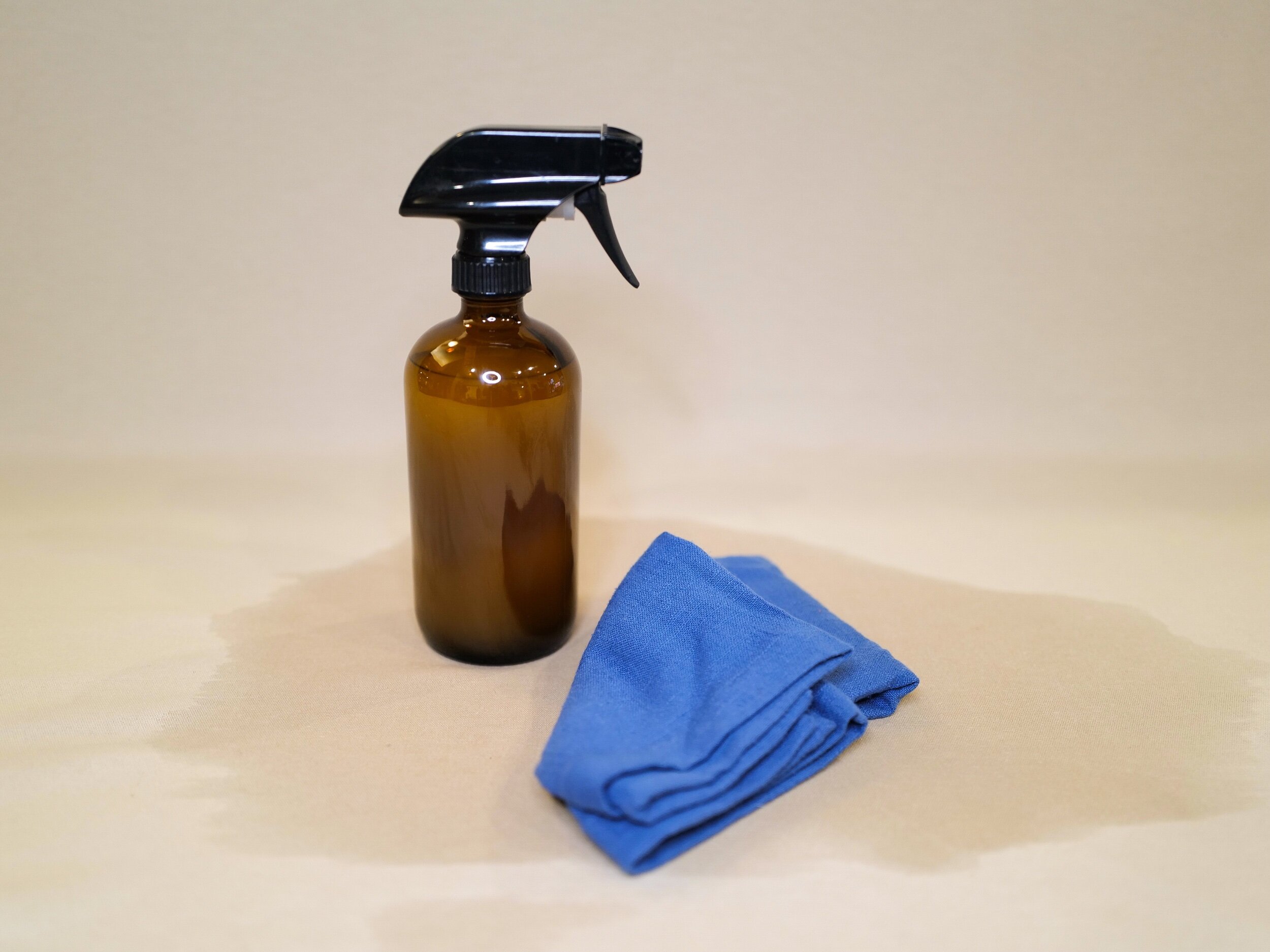Sustainable Home: DIY Citrus Vinegar Cleaning Spray
What if I told you that you don’t have to subscribe to a trendy delivery service to have a regular supply of all natural, non-toxic cleaning supplies at your hands? Well, today I am going to let you in on a housecleaning hack that I find particularly satisfying. This citrus vinegar cleaning spray takes little effort to make, uses cheap ingredients, and works just as well as anything I’ve bought bottled in the store. Plus, it makes use of kitchen scraps that most people typically toss in the trash.
This photo is a little blurry, but you get the idea.
what you need
Citrus rinds: lemon, lime, orange, grapefruit, whatever.
White vinegar
Glass bottle with spray nozzle
A funnel for filling the spray bottle
Fine mesh strainer (a coffee filter will work in a pinch)
A large glass container for soaking
Optional: essential oils or aromatic herbs for adding scent
Shop this post:
Collect citrus rinds in a large jar and cover with white vinegar.
Start by finding a large glass jar or similar container and filling it with citrus peels. The jar pictured above is completely full, but yours doesn’t have to be at first — just start collecting citrus peels in the jar as you discard them. Once you have enough lemon peels to cover the bottom of the jar, pour white vinegar inside until everything is submerged.
I use plenty of citrus at home and my jar fills up quickly, but if you’re eager to start this little science experiment then I suggest you kick it off with a big ol’ batch of lemon bars. Or lemon curd. Put your children to work with a lemonade stand. They need to learn the value of hard work anyway!
2. Let the citrus marinate in the vinegar.
The lemon peels and vinegar need time to marinate and join forces, so wait at least a week before bottling. The longer the ingredients sit together, the more the citrus breaks down into the vinegar, adding lemony scent (so your crib won’t smell like a pickle factory) and citric acid, which is a powerful cleaning agent. Add citrus peels as you go through them and cover with vinegar. You can store your jar on the countertop or refrigerator.
3. Strain well and bottle.
After you’ve waited at least a week for the citrus + vin to combine, you can bottle the solution and start cleaning. I like to bottle mine without diluting and use water as needed, but I have seen recipes that suggest diluting it 1:1 before bottling. It will be most effective undiluted, but it can be too strong for some surfaces. I will share more about that later in this post.
Before bottling, you’ll need to strain all of the peels, pith, and pulp from the vinegar using a fine mesh strainer. I used coffee filters for the first year of making this cleaner, but I recently realized that my strainer bag is perfect for the job. I pour the solution through the bag to strain it and then squeeze the bag a few times to get as much liquid out as possible.
Then, I transfer it to the spray bottle with a funnel. I sometimes add rosemary essential oil at this point, too. Any leftover liquid goes back into the big jar, which goes back into the fridge to start the cycle all over again.
4. Start cleaning!
Congrats, you have now repurposed everyday kitchen items into an all-purpose, nontoxic homemade cleaner. Now the fun begins! Just kidding, I don’t know anything about making housecleaning fun.
You don’t really have to worry about it going bad before you use it; I keep my spray bottle stored on the kitchen counter at room temperature.
What can be cleaned with vinegar?
This list will by no means be exhaustive, but I do want to make sure I give you the proper warnings about where you can safely use this cleaner and where you should proceed with caution. Vinegar and citrus can both be corrosive when undiluted, so in some instances you simply need to dilute the spray with water to make it safe to use. I will list all of the surfaces I commonly use this cleaner for below, but if you have any doubts or questions I encourage you to do your own research. (Look… I’m not an expert or a chemist, I just hate dirty counters.)
The following can be safely cleaned with vinegar
Kitchen
Because it’s nontoxic and food safe, I find this vinegar cleaner to be especially handy in the kitchen. Here are the spots where I use it most often:
Kitchen Sink. Use hot water, a scrubber, and this cleaner to degrease and disinfect the kitchen sink.
Cutting Boards. This cleaner will remove stink and stains from both plastic and wooden cutting boards. Spray them down, let it sit for a minute, and then rinse off and wipe dry to disinfect and remove smell. We use a butcher block table in our kitchen and I use this spray on it all the time! Over time, the vinegar can be drying on wood so be sure to regularly condition your cutting surfaces with oil as well.
Sheet Pans. When my beloved sheet pans get encrusted with mess, I spray them down with this vinegar spray, shake a little baking soda on, and then let them sit with water. The chemical reaction of baking soda + vinegar helps loosen up anything that’s stuck.
Garbage Can. Next time you take the trash out, give the can a quick rinse with the sink sprayer and then spray this cleaner inside while it’s still wet. Wait until it dries to replace the bag. It will remove existing odors and help prevent more stink going forward.
Fresh Produce. A lot of produce will stay fresh for longer if you rinse it with vinegar and water before storing it away.
Bathroom
Shower doors. Vinegar is well-known for making windows sparkle, and the same goes for shower doors. Once a week, spray your shower doors down with citrus vinegar cleaner, use a rag to buff any stubborn spots, and wipe clean with a squeegee.
Showerhead. This vinegar solution can also be used to break down mineral deposits that water leaves behind. Pour some of this solution into a plastic bag and secure it around the showerhead with a rubber band. Make sure the entire spray surface is submerged. Remove before your next shower.
Do not use undiluted vinegar cleaner on the following:
Natural Stone finishes. Don’t use this cleaner on granite or marble countertops and floors. Vinegar and citric acid are corrosive and can break down the seal on natural stone, dulling the shine and leaving it susceptible to scratches and stains.
Rubber. Be careful using around rubber parts (like on the dishwasher seal or coffeemaker),
Electronics. This cleaner can be swapped out for rubbing alcohol in a lot of cases but keep it away from your electronics screens and inner parts.
Knives. Some grades of stainless steel will tarnish if cleaned with vinegar.
TL;DR
For those of you who are like “ok, get to the vital info already!”
Directions
Collect citrus rinds in a large jar and cover with white vinegar
Let the vinegar and citrus marinate for at least a week
Strain the mixture very well and transfer to spray bottle (add essential oils if you desire)
Clean away!
Materials
Citrus rinds
White vinegar
Glass bottle with spray nozzle
A funnel for filling the spray bottle
Fine mesh strainer or paper coffee filter
A large glass container for soaking
Optional: essential oils or aromatic herbs
Store at room temperature.
Did you know you can use white vinegar to clean your house? My mother always kept vinegar in a spray bottle for cleaning, but I was surprised when I learned all of the places it can replace store-bought cleaners. Let me know if you have other DIY cleaning recipes or if you decide to make this one.











